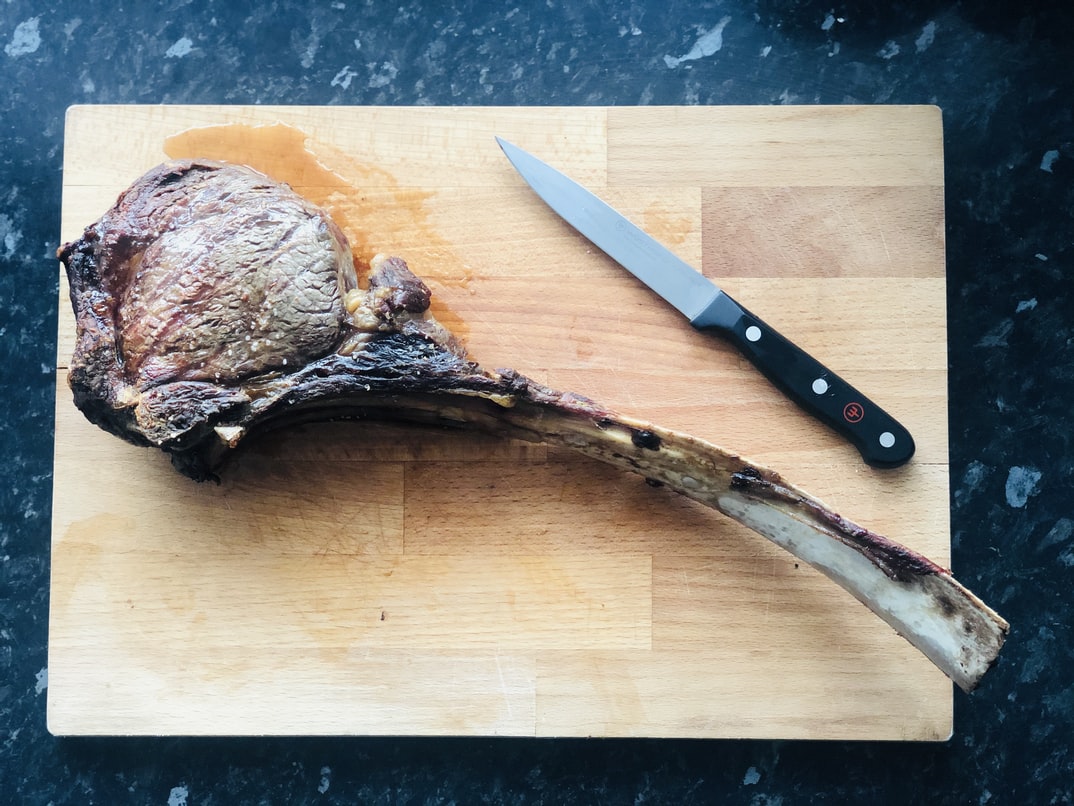Fillet of meat is expensive. And if you don’t chase the flesh and buy meat on the bone, does it make sense? We find out what Kenji Lopez-Alt, The New York Times columnist, food consultant and author thinks about the effect of the bone on the flavour and aroma of meat. Trust us, after reading the piece, you, like us, will have a change of heart about bones.
Grilling meat on the bone
We hear it all the time: cook steak on a bone, buy meat on a bone… Many chefs and cookbook authors say that bones will add flavor and even taste to the meat. I was sceptical and so decided to go in from afar to find out where in the bones the claimed potential might come from.
The most cursory look at the structure of bones
In our case, let’s simplify the structure of bones as much as possible and say that bones consist of solid calcified bone matter, bone marrow and bits of connective and fatty tissue.
Bone matter itself is largely a tasteless thing. It is incapable of affecting meat in terms of taste and flavour. The marrow is locked deep inside the bones and cannot be effectively extracted unless the bones are split or sawed in half. Have you ever tried making broth from whole beef bones without cracking and without bits of fat and meat on them? If you do, you can only get a faint taste and a faint aroma. To get real flavour and taste you need to get to the connective and fatty tissue, because everyone knows that the most delicious part of cooked beef or pork ribs is the fatty bits that we chew off or cut directly from the bone.
A piece of meat is not a sponge
Now for the meat. Steak and generally lean cuts of beef are on average 70% water, but try to squeeze some liquid out of the meat and you won’t get anywhere. Unless you have the powers of a superhero, you won’t see water dripping and leaking out of a piece of meat. It’s all about the fact that it’s safely ‘packed’ inside it with muscle. This is the reason why most marinades are largely ineffective. They only treat the surface of the meat, they don’t flow inside the fibres. Even marinating overnight will only give you a couple of millimetres of penetration. So what are the chances of any flavour compounds from the bones getting into the meat while it’s cooking?
It turns out that any liquid starts to move when you start cooking the meat and its muscle fibres start to contract. Of course, it doesn’t move freely – it’s not the tides of the sea, after all. In fact, the liquid inside the meat moves in one direction only: outwards. That’s why meat is only enriched with flavours and aromas from the bone when it’s cooked, but that’s all just theory.
Practice cooking meat on the bone, results and conclusions
I cooked four identical pieces of beef with bone-in, only before cooking they were handled differently. The first was cooked with the bone. For the second, I removed the bone but tied it firmly to the meat with culinary twine before cooking. For the third, I removed the bone, put foil over the cut area and, returning the bone to its original place, tied it firmly. The fourth piece was cooked without the bone.
Roasted the meat and tasted all four pieces. It turned out that the first three were quite indistinguishable from each other. The fourth piece was different both in taste and texture. The meat was a little tougher where the bone was.
This means that the theory of the bone’s effect on the meat makes no sense at all – a completely intact piece of meat tasted the same as a piece where the bone was sealed off from the meat by the foil. But it also means that the bone serves at least one important function: it slows down the cooking of the meat and reduces the surface from which the moisture escapes, i.e. it protects the meat from drying out.
The bone itself is a better conductor of heat than the meat. However, the bone is not hard because it has a honeycomb structure with lots of micro air chambers. These help the bone to protect the meat from temperature changes. This is where the expression “meat tender on the bone” comes from. If you look at pieces with bone, the flesh next to the bone will be less cooked and therefore more tender. So keep this in mind when allocating the cooking time: meat on the bone is usually cooked slower than meat without a bone. Individual portions with bones, such as chops, take longer to cook than their meat-only equivalents.
Incidentally, this is why it is recommended to insert the thermometer away from the bone when checking the cooking of meat with a core probe or special thermometer. Testing close to the bone will give you an artificially low value. The meat closest to the bone heats up more slowly – often by 5-10 °C – than the rest of the meat.
And, of course, another advantage of cooking on the bone is that the bone is also the wonderful gristle and fat that many people enjoy chewing and chewing so much.
Conclusion: to cut or not to cut
The best way to cook beef is not to cut the meat off the bone. If you want to fuss, simply separate the bone and reattach it to its original location using cooking floss. You get the same cooking quality as fully boned meat, but with the added advantage that once the meat is cooked you remove the bone in one motion, slicing the flesh quickly and easily.
From the editors. We have further investigated the effect of bone on the meat. Thanks to recent research, foreign chefs have reached a consensus on this age-old debate. Cooking steak with a bone does not affect the taste. The impenetrable bone simply can’t impart the flavour to the meat. But the statement that “fat is flavour” remains valid. And if there’s gristle and fat on the bone, it enhances the flavour of the dish, especially when cooking meat. Also, meat on the bone, such as steaks, retains its shape slightly better than boneless cuts. This is information for those who care about perfect appearance.

